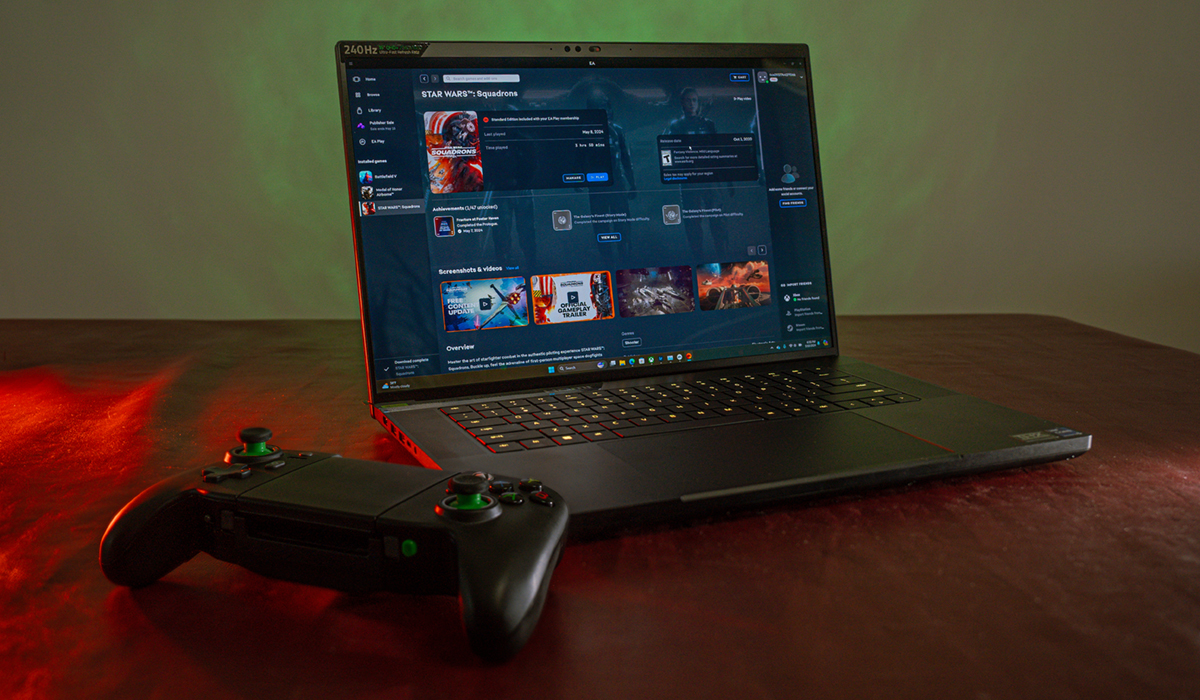
The Razer Blade 16 returns for a newer iteration in 2024 as one of the premium gaming laptops but is there enough here to make a big difference? That will mostly depend on your perspective and how old your current gaming laptop happens to be. It also depends on which configuration we’re talking about.
For Razer, the Blade 16 is powerful enough to run the latest games with the best settings, though it also sees this laptop as a content creation tool. With this kind of power, why not edit video or photos, render graphics, design 3D objects or animate something? This laptop can do all of those things, though gaming has to be one of your passions to justify going with a device like this.
The Blade 16 is a beast
To be clear, my review unit is basically the base configuration in that it uses the newer 14th-gen Intel Core i9 Raptor Lake Refresh CPU with 16GB of RAM and 1TB of storage. As far as its general look goes, Razer changed little from the 2023 model, save for tweaks and shifts or additions here and there—most of which incur an extra cost. One of the biggest is bringing in an OLED panel as an option, adding a level of depth and contrast to whatever you watch on it. It isn’t as bright as the Mini-LED panel but offers better colour and more seamless gradients during gameplay (and video production). It’s a Samsung OLED panel filled with a range of certifications, like VESA ClearMR 11000, Calman Verified and VESA DisplayHDR True Black 500.
Any way you look at it, this is a high-end laptop just by its design. A metal body with super slim bezels, a monstrous glass touchpad and RGB backlit keyboard. Apart from the one Thunderbolt 4 port, you get one USB-C 3.2, three USB-A 3.2 ports, memory card slot and headphone jack. Naturally, you also get an HDMI 2.1 port to set this up with a monitor or TV if you want to go that route with your own setup.
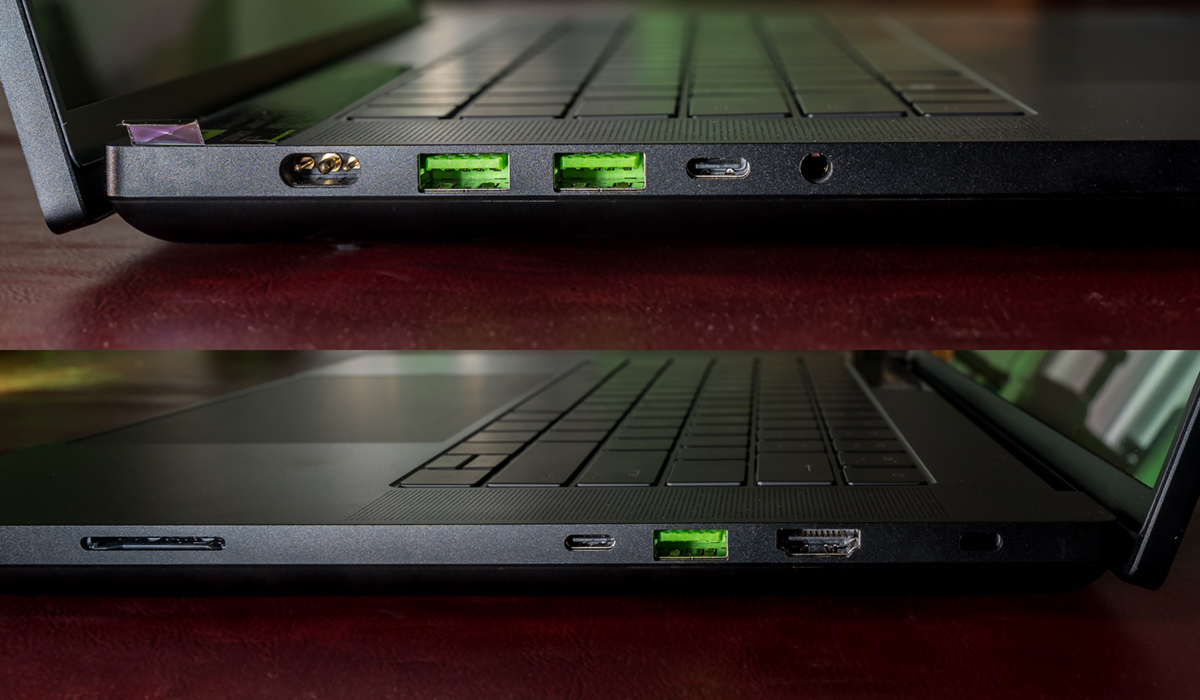
It’s a laptop but it’s also a heavy one at over 5 lbs., and when you factor in the general thickness and size of the charging brick, the Blade 16 isn’t as portable as all other gaming laptops. Gamers who understand these nuances will be experienced enough to recognize the trade-offs that come with a gaming laptop, but if this is something you’re considering for hybrid use, bear in mind you’re more likely to keep this parked in one or two places.
No matter how you handle it, expect fingerprints and smudges to stick like glue to the body and keys. The finish is slick and makes the Blade 16 look nice, only you’ll need to wipe it down often to keep looking that way.
General performance
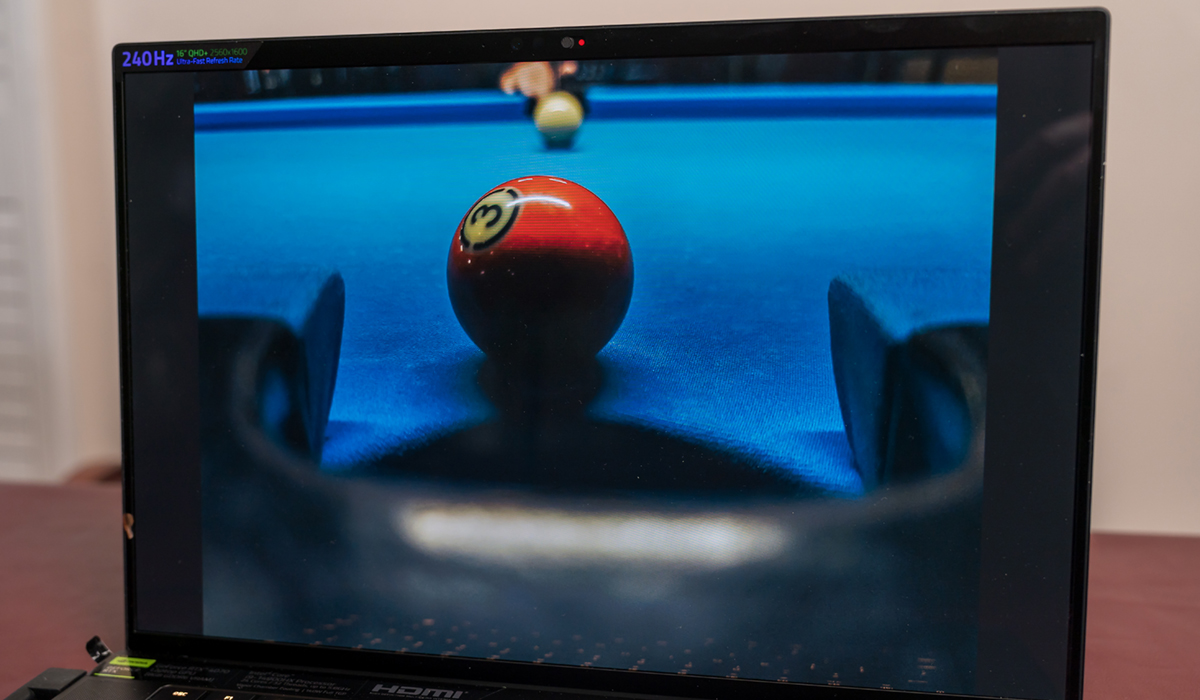
Razer pre-calibrates every screen from the factory before it ships out so you don’t need to play around with that out of the box. For those interested in the details, the company also offers different colour profiles in its Synapse software that include DCI-P3, Adobe RGB, Rec. 709 and sRGB, letting you select whichever one you prefer manually at any time.
My review unit had the Nvidia RTX4070 GPU, which is the base graphics chip, so this let me gauge what the baseline is. Naturally, the 4080 and 4090 take things much further in graphics performance but you also have to consider the cost to upgrade to either chip.
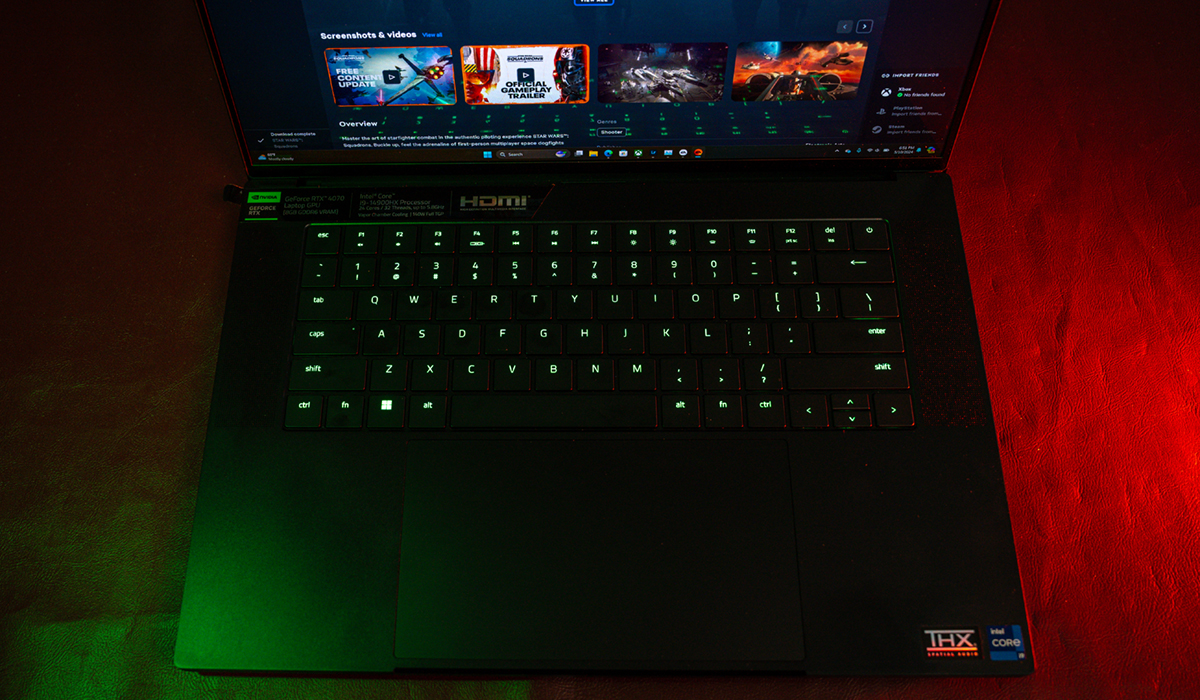
Personally, I’m more of a controller guy over a keyboard-and-mouse gamer, so can’t go as in-depth on the keys themselves. It’s a spacious keyboard to be sure, and one that I found reasonably good for typing up documents or shortcutting my way through photo edits. Without question, you’ll breeze through any general task on this device, be it browsing, working with office files, installing applications, watching video or moving things around.
The thing is, once you start pushing the CPU and GPU, the Blade 16 not only starts to get hot, it also gets loud because of the fans inside. Those fans continue to blare, especially during gameplay, but can also make their audible presence felt during 4K video editing and rendering when you’re dealing with very large file sizes. Photos tend to have a much lighter footprint, unless you’re running a number of demanding apps at the same time. So, on the one hand, the Blade 16 is uber powerful and capable of running just about anything, while on the other, it gets hot and loud when it really starts working.
Gaming performance
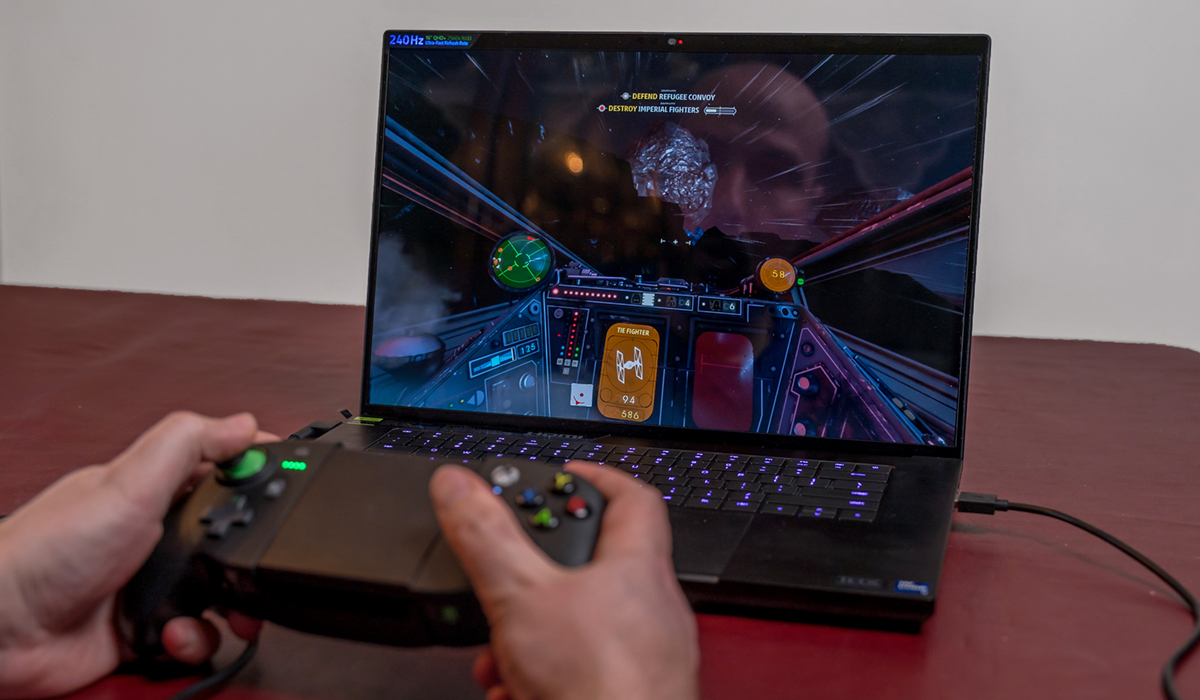
Being the beast it is, the Blade 16 handles most games with aplomb. I tried it with a range of titles, be it PC games or console and cloud-based ones to get a sense of what you can expect. Given I had the RTX4070, I knew I didn’t have the longest runway as far as max settings were concerned, but I could push it a little and get some serious mileage out of the visuals. From Battlefield 1 to others like Star Wars: Squadrons, Halo Infinite and Tomb Raider, graphics looked fabulous throughout with no real frame rate issues.
Even a game I previously played on console (Terminator Resistance) looked far superior visually on the Blade 16. Other titles were more a mixed result, like Just Cause 4, for example where smooth gameplay also came with a lack of detail in cutscenes.
The OLED panel is sublime throughout it all, though certainly more susceptible to glare because of the glossier finish. Apart from the higher contrast, another key is the refresh rate. We’ve seen screen refresh rates increase to 120Hz on phones and tablets using OLEDs, and now we get 240Hz for gaming on a 16-inch OLED. Hence, frame rates are only an issue if the laptop can’t handle a game at certain settings. Cyberpunk 2077 is one of those games—though I can only speak to the configuration I had with my review unit. The game is known for its outstanding visuals that demand plenty from a PC’s hardware. You won’t be able to play it with maxed out settings using the same model I had. You will have to compromise on something, be it toggling off ray tracing or raising the resolution to the Blade’s default.
In that respect, running games in 1080p generally works without issues popping up. You may get away with some games at the higher resolution, but it will highly depend on the game and what settings you compromise on. Either way, expect the laptop to run hot and the fans to get loud enough for others to hear. Razer’s Synapse software is a good way to manage some of the Blade 16’s settings, though you don’t always have to go there. Some games will recognize the Blade’s power and adjust accordingly, where you can then manually change things from there.
Battery life
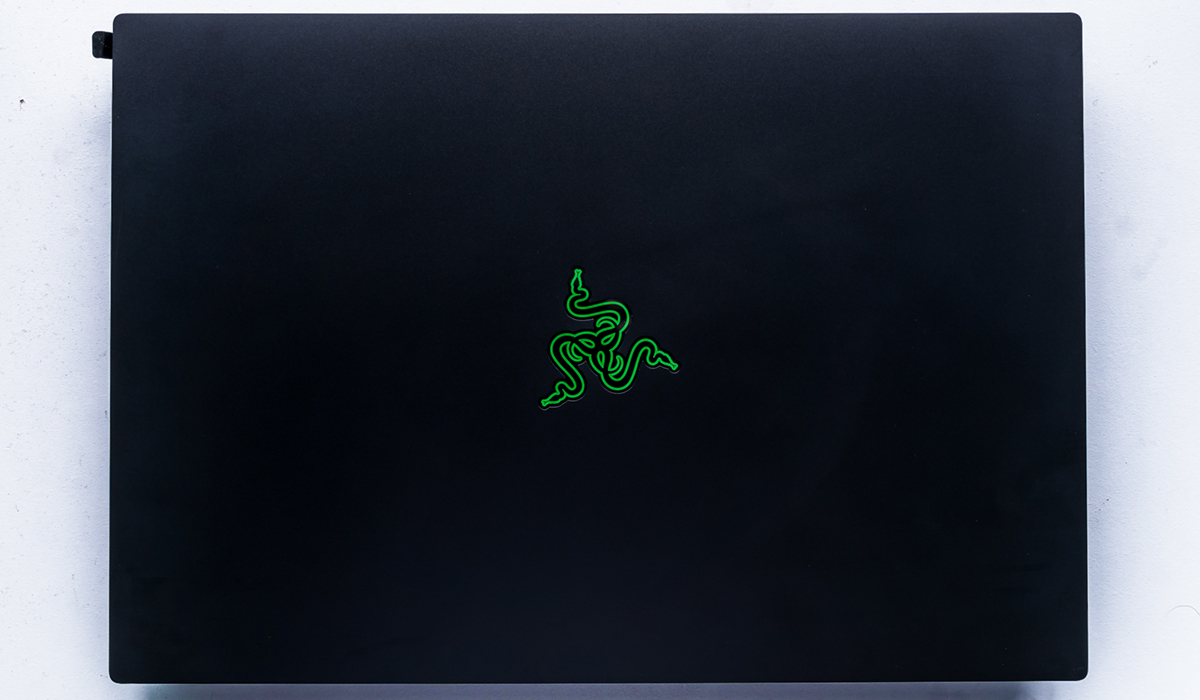
Since it’s a gaming laptop first, the Blade 16 won’t last as long per charge as a standard laptop. Keep that in mind if you’re thinking of using this as your “everything” machine. So, from that standpoint, I can’t fully quantify the numbers, but suffice it to say, you’ll have limited time playing games without staying plugged in. That’s less of an issue if you’re working on something or just browsing the web, for instance, but still not exceptional. I was lucky to hit four hours under those conditions.
That’s why it’s worthwhile to look at this as something of a desktop replacement. If you have a monitor you love or no longer want an all-in-one desktop, this could be the hybrid that gives you some mobility in the process. For me, personally, I couldn’t use this as a work computer simply because it’s not as easy to travel with.
Final thoughts
The Razer Blade 16 requires a commitment. First, it’s what it will cost you to get the configuration you want. Second, it’s the trade-offs you have to accept to get the luxury build and performance you’d expect from a laptop of this stature. While it proves itself more than adept at handling intensive non-gaming tasks, I don’t see the point in getting the Blade 16 unless you’re a gamer first. That may go without saying, but it’s bears repeating considering the different configurations available and premium pricing.
The Razer Blade 16 (2024) is available now with the Nvidia RTX 4070, RTX 4080 or RTX 4090.




